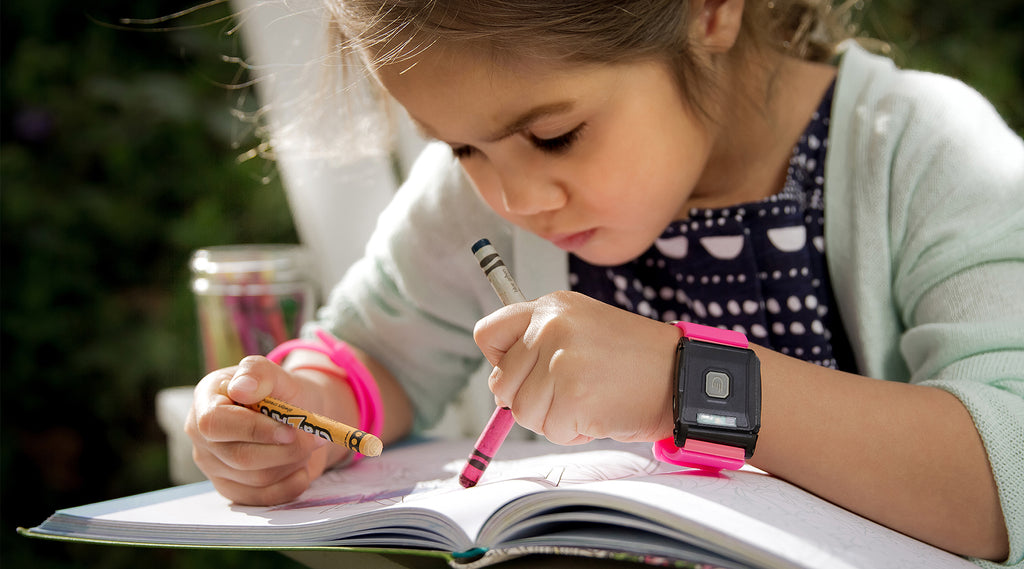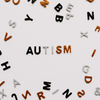Touchpoints and Autism Spectrum Disorder

What is Autism Spectrum Disorder?
Autism Spectrum Disorder (ASD) is a developmental disability that impacts communication and behavior. While it can be diagnosed at any age, symptoms are often seen starting in very young children.
According to the Diagnostic and Statistical Manual of Mental Disorders (DSM-5), people with ASD have:
- Difficulty with communication and interaction with other people
- Restricted interests and repetitive behaviors
- Symptoms that hurt the person’s ability to function properly in school, work, and other areas of life
Autism is a “spectrum” disorder as there is significant variation in the symptoms people experience. People with ASD might have problems communicating with others, like making eye contact. They may also have repetitive behaviors and very specific interests. They may repeat themselves, spend a lot of time ordering things, or just seem to be in their "own world."
Preparing After an Autism Diagnosis
Receiving the news that your child has autism can be challenging. There are a lot of decisions to be made, including specialized childcare, different options for speech and language therapy, and schooling. The Autism Society says that “Parents/caregivers must now place their primary focus on helping their child with ASD, which may put stress on their marriage, other children, work, finances, and personal relationships and responsibilities.” There are steps you can take to help support you and your family during this time of transition.
Build A Network: It is important have a network of people who can work as a team to help with things like chores, school runs, and sports events. A Concordia University study showed parents of autistic children report higher levels of stress A support network is a powerful way to reduce stress.
Embrace Technology and New Advances: There are a lot new advances that can help children with autism reduce their stress levels and cope better. Bilateral stimulation has been used by EMDR therapists for decades to significantly reduce beta waves (stress) and are used successfully with children with autism. TouchPoints use this type of technology which is backed by a significant number of research studies and can safely and easily be used at home. TouchPoints work by altering the body's stress response with patented BLAST (Bi-lateral Alternating Stimulation Tactile) technology. BLAST uses gentle, alternating vibrations on each side of the body to shift the brain from its default "fight or flight" response to its calm and in-control response.
Prepare Financially: Because there are expenses that may not have been considered before the autism diagnosis, assessing finances enable you to analyze the types of treatment you can afford, and to weigh decisions like whether or not one spouse or partner should reduce work hours. If you are eligible for Medicaid, you should know that some states disregard income for individuals with autism who require an institutional level of care.
Visit How Can Families Cope With A Diagnosis Of Autism for more information on steps you can take to be prepared after an autism diagnosis.
Addressing Sensory Overload
Children diagnosed with ASD often experience sensory integration difficulties. Sensitivity to lights, noises, touch, and changes in temperature is enough to cause avoidance, anxiety, and extreme meltdowns. Occupational therapists (OTs) and physical therapists (PTs) typically try to provide sensory information as part of a treatment plan to organize the central nervous system to produce a more organized response to sensory stimuli.
Children who do may only receive an hour or two per week of treatment. In addition, many techniques attempted outside of the therapy office fail to override the nervous system reactivity in a significant way. Some techniques require the child to actively choose to start a behavior or place burden on teachers to initiate, which risks the intervention being too late to prevent a meltdown.
The result is that children with ASD have extreme difficulty functioning in typical classrooms or in situations where the sensory stimuli is not controlled. They are often flooded with anxiety in everyday situations that others’ find tolerable, resulting in an inability to focus, learn, or experience joy. Often times calming before sleep is a nightly difficulty that leaves parents feeling exhausted and hopeless.
TouchPoints offer a passive, non-invasive solution that may be more powerful that other methods in preventing nervous system hyperarousal in real-time. TouchPoints can be used in the classroom, at home, or during therapy sessions to attempt to reduce sensory hyperarousal for improved outcomes in children with ASD.
Encourage Good Hygene
Sometimes the act of cleaning can be uncomfortable or disorientating for someone with autism. But there are simple ways to reduce the discomfort and establish a routine to ensure good hygene habits are formed and reinforced.
Reduce Sensory Overload: As we covered above, children with autism are often triggered by sensory overload, so do your best to limit this in the hygiene routine. For instance, consider a bath over the shower if your child feels anxious at the sound of rushing water. Using an all-in-one shower gel which can be used as both a shampoo and conditioner will limit the amount of time spent scrubbing the scalp, while roll-on deodorant provides less of a shock than a spray. Strong smells can also be a trigger. Non-scented or lightly scented products are better than those with perfumes or strong scents.
Use How-to Pictures: While you should initially show your child how to perform hygiene tasks such as teeth brushing and handwashing, they will eventually need to do it alone. Put up relevant signs clearly instructing how to effectively clean yourself. Pictures and diagrams will make it easier to understand. This will help to clarify and increase understanding of correct hygiene habits. If you are using TouchPoints, you can use our TouchPoints User Guide for children who can read or reach out for a graphic guide for younger children.
Maintain a Defined Routine: Most hygiene tasks are a daily requirement, so it is easy to devise a rigid and consistent schedule for your child. A morning routine, before bed routine, and habits throughout the day such as at meal and bathroom times will become a habit for your child within a few weeks. Regular use of TouchPoints can also be scheduled on a daily basis, since they can be used in advance of a stressful situation to help the child stay calm and in control. It’s all about maintaining consistency to remove fear of the unknown and adjusting any problematic moments to suit your child’s needs.
All children struggle with personal hygiene at times, but for kids with autism, there can be a couple more obstacles. Every child is unique, but find ways to avoid sensory overload and make the cleaning process easy and relaxing. For most people with autism, it isn’t that they don’t want to wash, but that it can be overstimulating. Use TouchPoints to alleviate these sensations. Once you have a consistent schedule and clear instructions, it should be easier to help your child to stay looking clean and safe from germs.
Battling Caregiver Stress
Over 3.5 million Americans live with an autism spectrum disorder, according to the Autism Society, and parents are often their primary caregivers. This can be a significant source of stress, which can lead to chronic stress if not addressed. As noted by Autism Help, signs of caregivers stress include having headaches, difficulty sleeping, and feeling emotional or anxious. Stress is not in itself negative, but when becomes chronic, it can increase the likelihood of everything from heart disease to diabetes and obesity. If you find that you are often fatigued or anxious, meeting stress head-on is key. Battling stress successfully means tackling problems proactively. Wearable stress reducing technology, meanwhile, can actually stop your body from going into the fight/flight/flee mode, so as to avoid anxiety and panic attacks.
Stress Relief Devices: If you are a parent of or a caregiver for a child on the autistic spectrum, consider tapping into neuroscientific wearables, TouchPoints. TouchPoints are proven to reduce your stress by over 70% in 30 seconds, shifting you from fight or flight to calm and in control. All you need to do is wear place the devices on the right and left side of your body. You can use clothing clips to wear them on socks, straps, waistband or pockets, use wristbands for wearing them on wrists or simply hold them in the palms of your hands.
Determining The Cause Of Stress: Stress is often cumulative and therefore needs to be broken down if it is to be addressed effectively. List all your day to day activities that involve caring for a child on the autistic spectrum, and rate the stress each produces from one to 10. The main problem could be specific tasks or feeling like you do not have time to take care of yourself. It is important to create a personal strategy for the top sources of stress, leaning on others for the most difficult tasks and learning to delegate.
Embracing Social Support: Studies have shown that informal social support (relying on friends, family, a spouse, etc) is more effective than structured formal support (e.g. attending a support parenting or carer group) for caregivers. A study by B Boyd found that caregivers who received support related better to children in an emotional sense. Moreover, low levels of support were strong predictors of depression and anxiety in caregivers.
Workshops In Stress Management: Workshops focusing on stress management strategies for caregivers of children with autism have also been found to be effective. The key is to learn efficient problem-solving strategies for specific issues one may encounter during the caring process. Both parents and non-familial caregivers can benefit from receiving more information about children’s behaviors and from understanding how kids on the autistic spectrum process sensory information. Information is power because it tells you what to expect, thus lowering the levels of anticipatory anxiety.





Autism and ADHD are both majorly misunderstood Disabilities.